The 20 best images taken by ESA astronaut Tim Peake selected by photographer Max Alexander. Tim shared over 400 pictures during his six-month Principia mission on the International Space Station, many from the European-built Cupola observatory.
Photography is a common pastime for astronauts in space when they are not running research for scientists on Earth or maintaining the Station, but the cameras are also used to document experiments and take pictures for mission control.
All image credits: ESA/NASA
- Tim has exquisitely captured the sun’s ‘glint’ as it moves around the Earth, which catches the water along the way. This is a tough shot to make – to get the ‘right’ exposure in a high contrast situation – and Tim has expertly pitched the tones just right here.
- Lights on the ground, lights in the sky and lights in space make up this dazzling image. The United Kingdom and Ireland are immediately recognisable; the purples and greens of the Aurora Borealis shine to the north; and stars glow overhead. This photograph of manmade and natural light firmly places us in our cosmic habitat.
- Volcanic ash seems to merge into the clouds in this majestic scene from Russia’s east coast – with the snow melting around the mountaintop. Low raking light gives form to this monochromatic cloudscape.
- A Patagonian ice field spills into the ocean at the southern tip of Chile, seeming to create swirls of chocolate and cream frozen in time. This is one of Tim’s favourite photographs – maybe he’s missing ice cream…
- I really like the way Tim has used the clouds to frame the Panama Canal – giving a sense of the division between North and South America, and the passageway between the Atlantic and Pacific Oceans. Also the use of scale – once you see that those are ships lined up down there, the picture really comes together, and shows you how the Panama Canal works.
- Tim really scored a bull’s eye with this shot of the Yucatan Peninsula, which would have required quite a bit of planning for a favourable orbit. When 66 million years ago, a city-sized asteroid collided with the Earth, right in the middle of the photograph, it wiped out the dinosaurs and 75% of life on Earth. You can imagine an asteroid coming from space and hitting the Earth in this photograph. I asked Tim to take this picture while an offshore scientific expedition was drilling into the submerged impact crater, and also for Asteroid Day – an annual global event on June 30th that raises awareness about the threat of asteroids – which is in partnership with ESA.
- Towering cumulonimbus clouds belie a violent thunderstorm beneath in this stunning photograph. Low raking light casts long shadows, emphasising the form, and giving the photograph a three dimensional quality.
- I really like this composition. Warm embers of golden light catch this cloud wave stretching out across the picture, and set against an ocean of tranquillity. Far off in the distance the complementary blue colours of the atmosphere extend up into space, perfectly balancing the image.
- This picture of an African desert is all about texture and vibrant colour. It could also easily be taken for a satellite image of Mars – with its rusty orange tones. As Tim said – there are more similarities between Mars and the Earth than you think.
- Plankton bloom off the coast of Patagonia appears to be performing a dance in turquoise. Tim really has an eye for the abstract, as is exemplified by this image – which is only possible to see from space. Beautifully done!
- The most striking aspect is how distorted and oblate the Moon appears – which is caused by the atmosphere refracting the sunlight. Then there is the exquisite transition from the deep sky blue, through to the inky black of space.
- A superbly composed picture of a sunrise – one of sixteen that astronauts on the International Space Station see every day. This is a very difficult photograph to shoot. The combination of the ISS travelling at 28 800 kph, and using an exceptionally long telephoto lens – effectively a focal length of over one metre – means that Tim has to work extremely quickly and precisely to nail the shot.
- Timing is everything in this shot of the Cygnus supply spacecraft being captured by Tim Kopra using the Canadarm. This rendezvous in space is gorgeously set against the backdrop of rich colours, with obliquely lit cloud tops over the Caribbean. And the shot would have been over in a flash.
- The International Space Station not only captures satellites, it also launches them. Here, the DIWATA-1, the first Filipino microsatellite, is being shot out of the ISS – to observe the Earth and climate change. The photograph has a sci-fi feel to it – like a scene from 2001: A Space Odyssey, or perhaps a Borg cube spacecraft in Star Trek: First Contact.
- Tim was waiting to take a photograph of the Palms Islands in Dubai, when the Dragon supply spacecraft came into shot. Like a lot of great photography, serendipity can make all the difference. Later, Tim tweeted that ‘…it looks like we have caught a Dragon’.
- Another spectacular night time photograph, capturing London and the United Kingdom on the left, with Paris and France on the right. The airglow hugging the Earth clearly shows how thin our planet’s atmosphere is. To my mind, communicating the atmosphere’s fragility is one of the most important and powerful things an astronaut can do.
- The International Space Station is flying right through the aurora in this eerie image – which also gives the viewer the feeling of flying through these curtains of space weather. Photographing the aurora on the surface of the Earth is difficult; much harder still from space due to the speed the ISS is travelling. Tim has very quickly mastered low light photography to capture this.
- Italy is bathed in twilight in this emblematic photograph, with artificial light balanced out by the remnants of the day. Shot at the end of May, the International Space Station was orbiting with short nights at this time, and with sunlight never far away – as you can see on the curve of the Earth.
- Most pictures taken from the ISS don’t show stars, and astronauts get asked if they can see many. They can, in great profusion, and Tim has really captured this. Normally the stars are too dim in relation to the Earth for their cameras to record them. However, when exposing for the night side of the Earth their cameras can see these stars. Tim has pushed his equipment to the limit here, using a high ISO setting, with the lens wide open, and using a long exposure.
- You can’t help but smile along with Tim in this playful spacewalk selfie. He was given an unprecedented ten minutes of free time to take photographs and look down on our planet, while waiting for the ISS to pass into the Earth’s shadow before the astronauts could return to work.

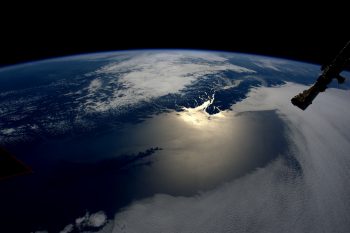
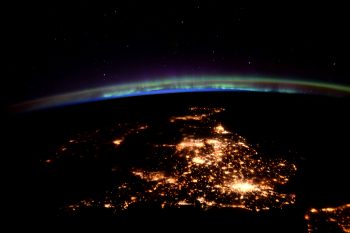
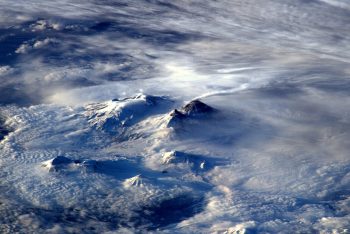
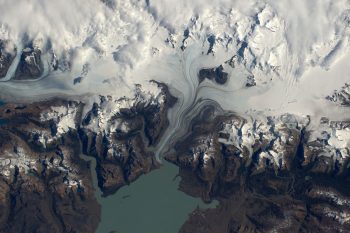
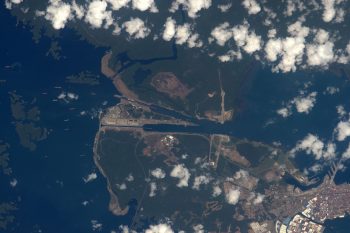
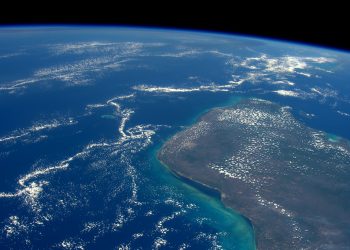
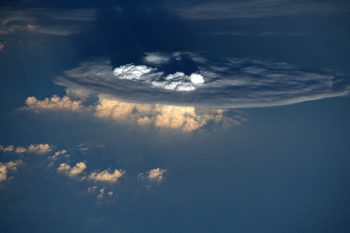
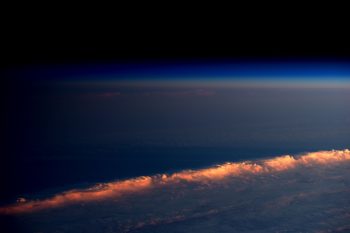
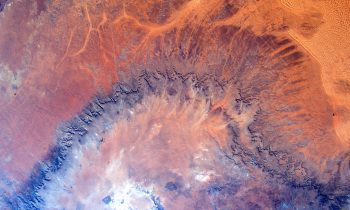
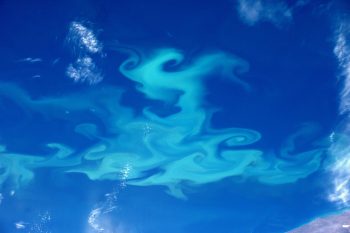
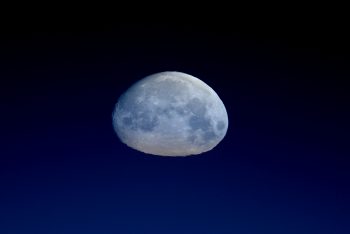
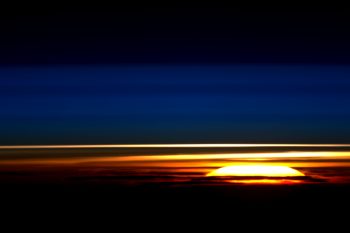

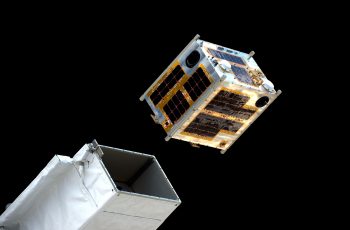
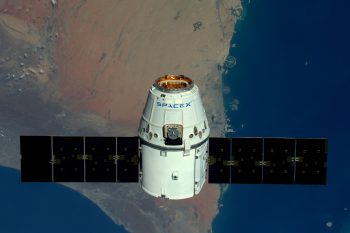
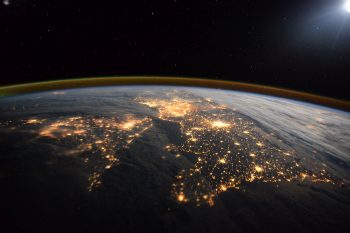
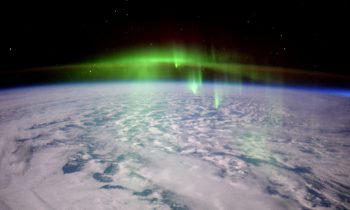
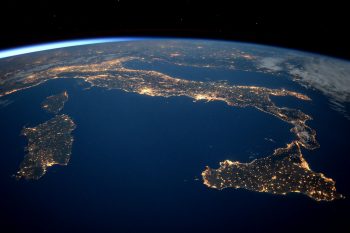
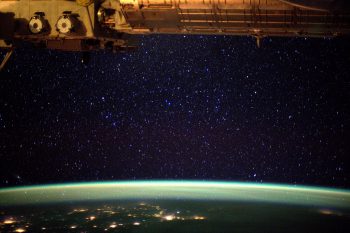
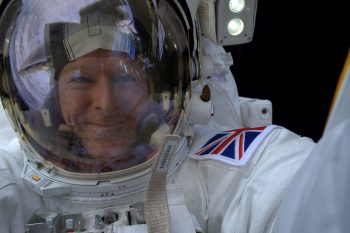
Discussion: one comment
hi guys!
Your pictures are eye-opening, and for that reason important! cheers! Question: Can you tell me where I can see a photo of the Yucatan at night from space?